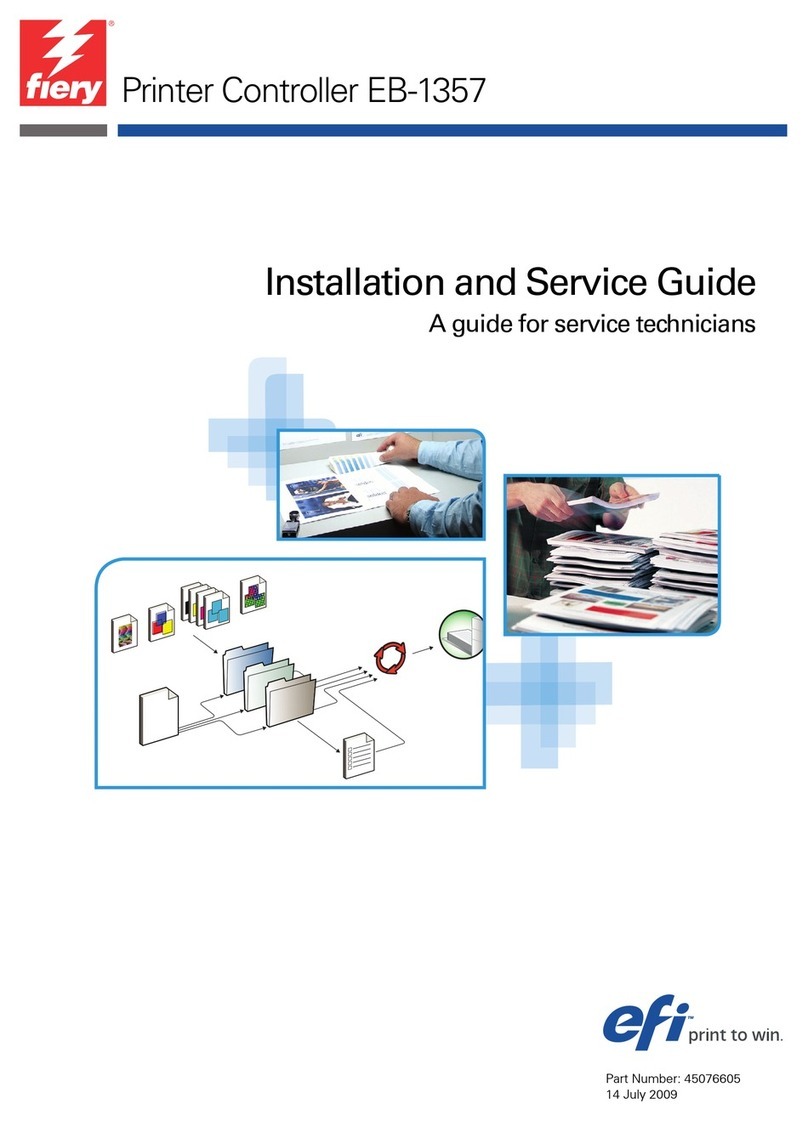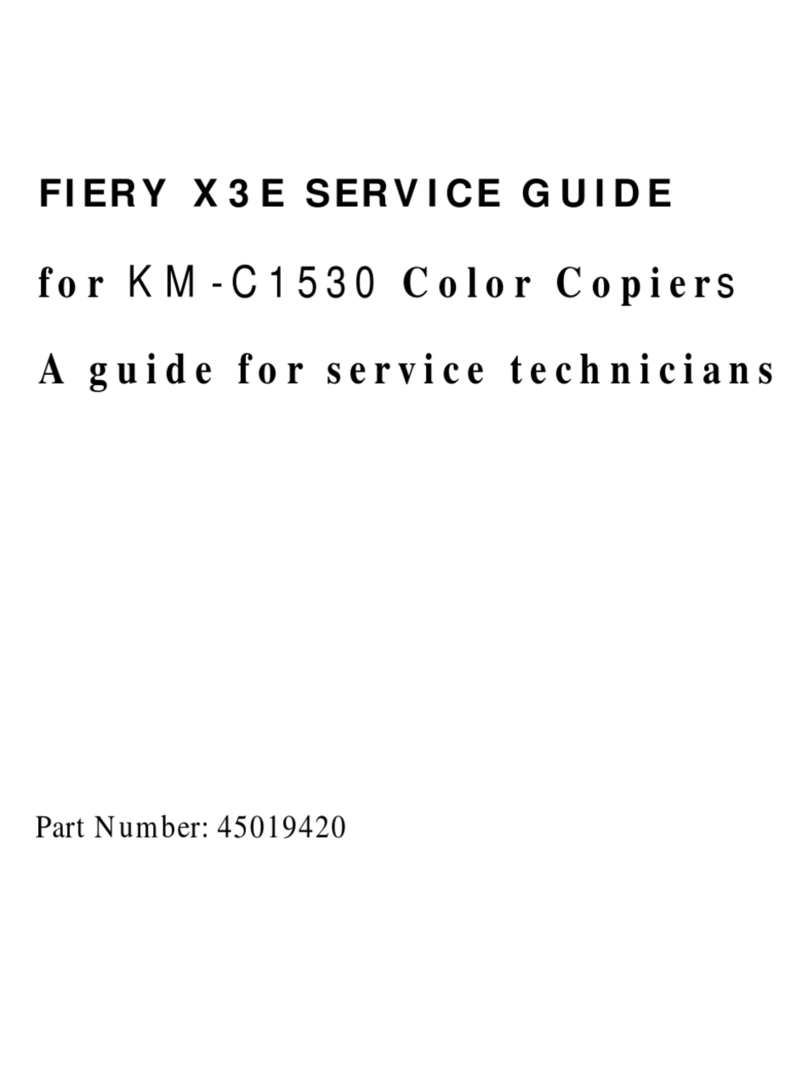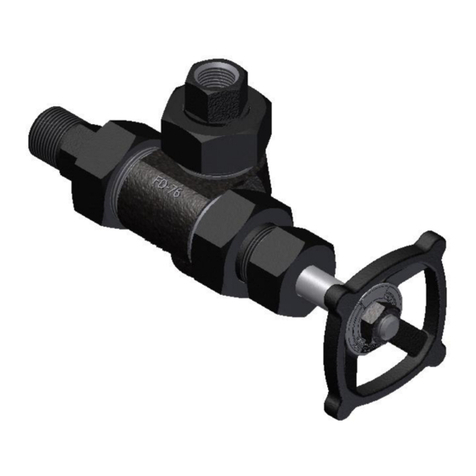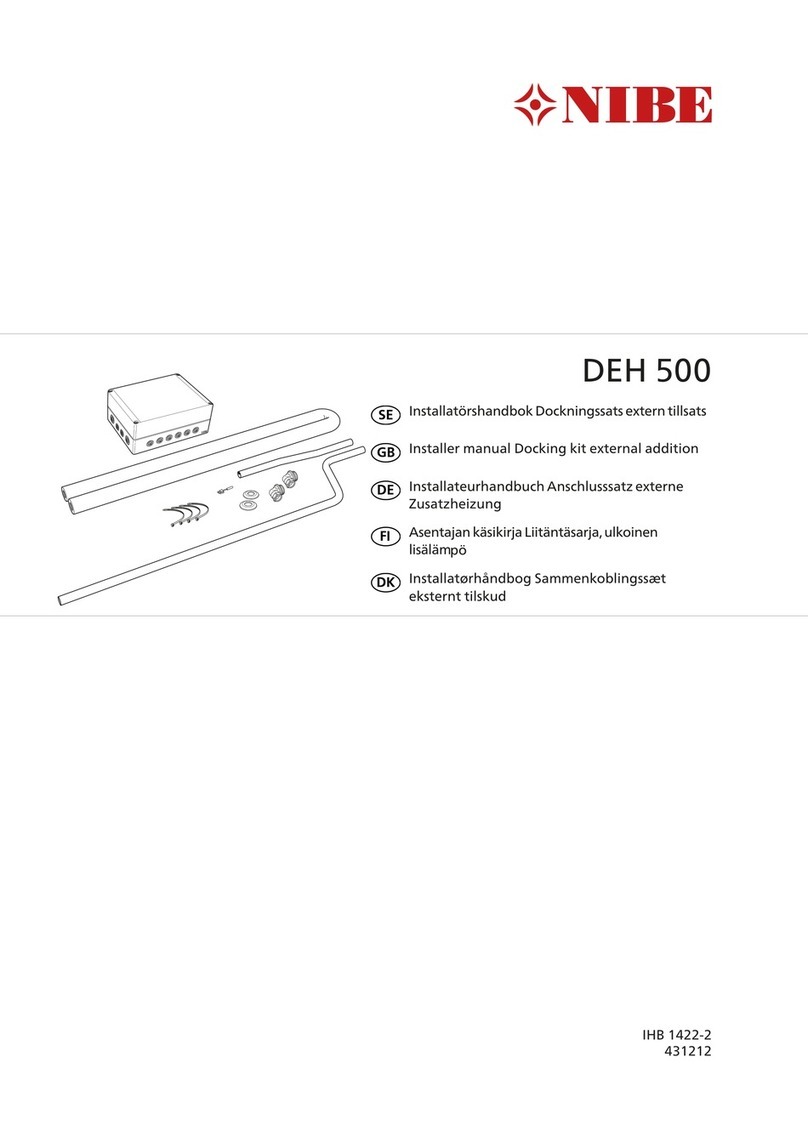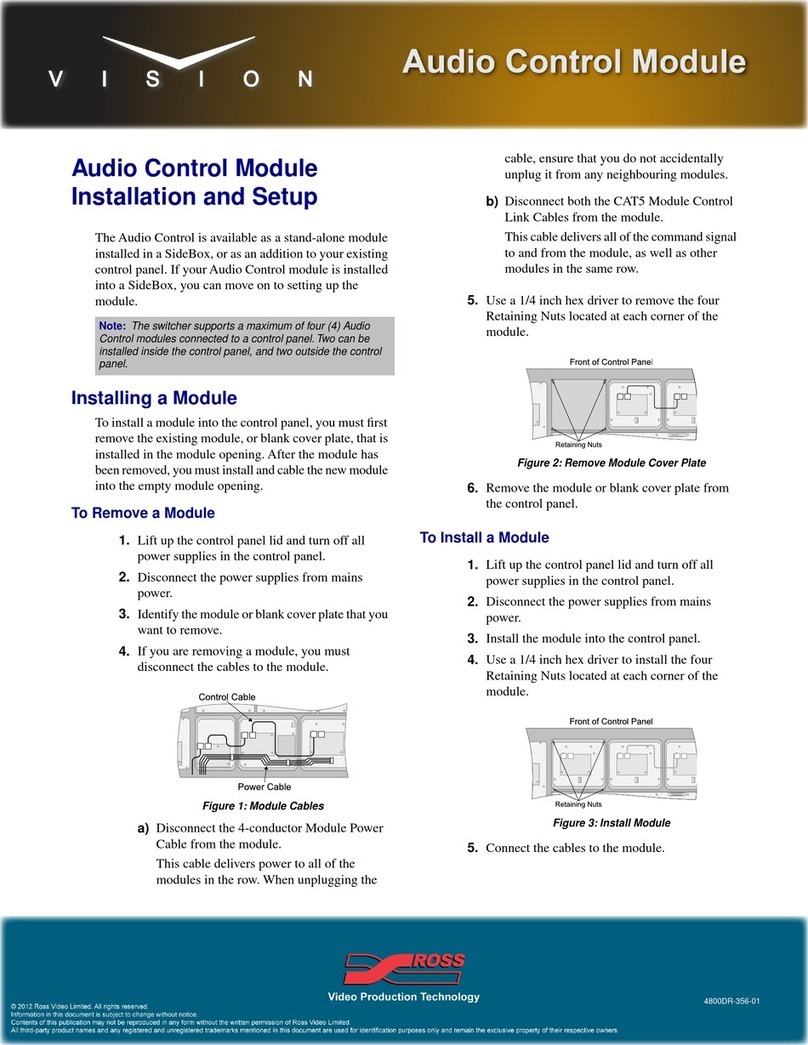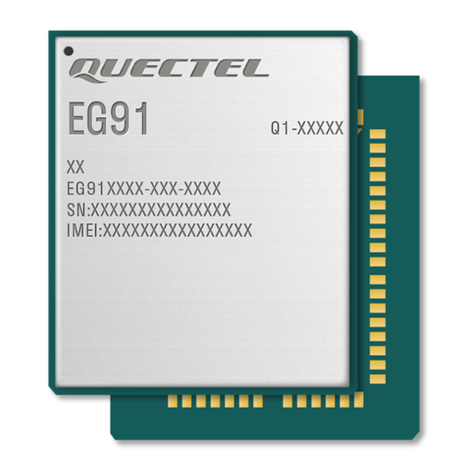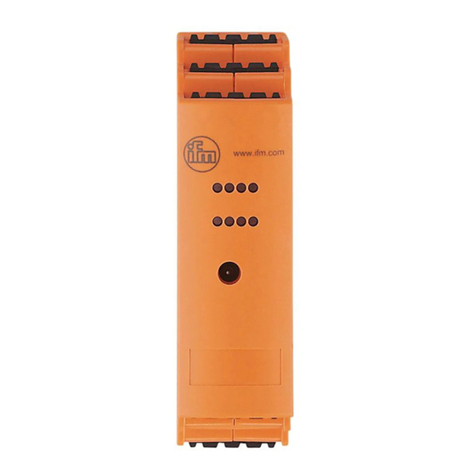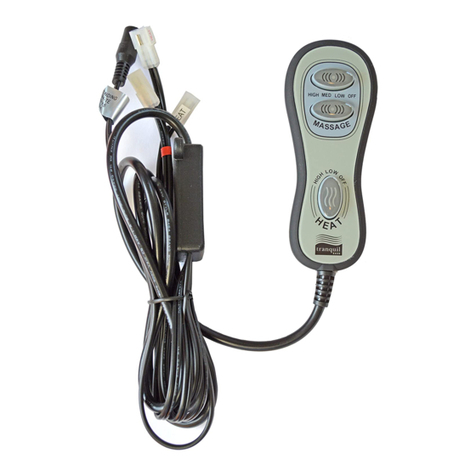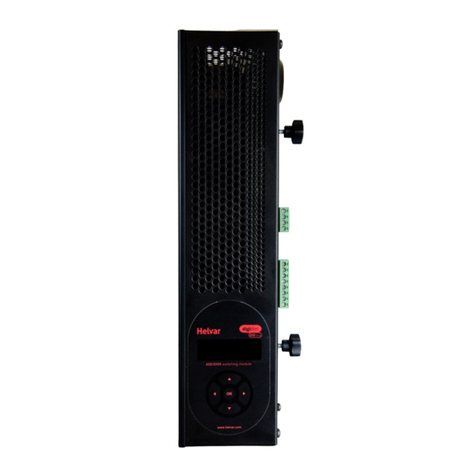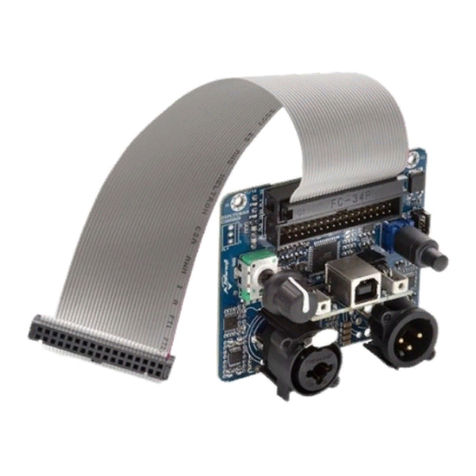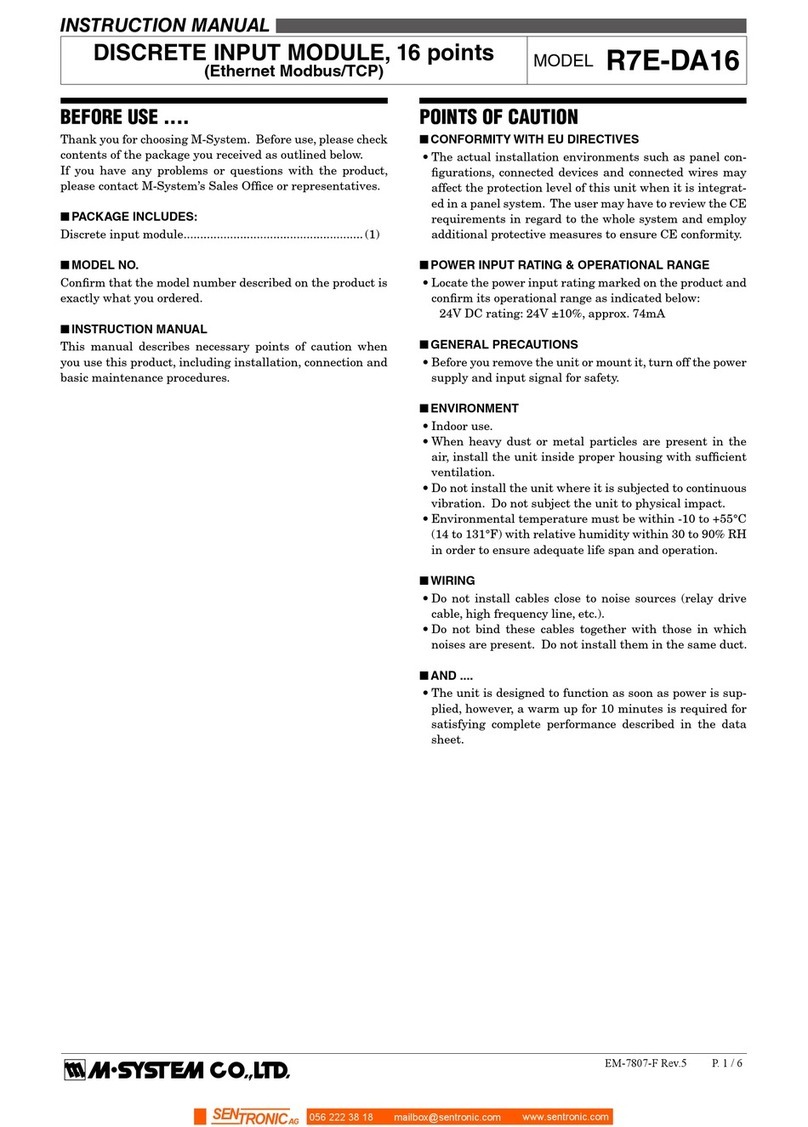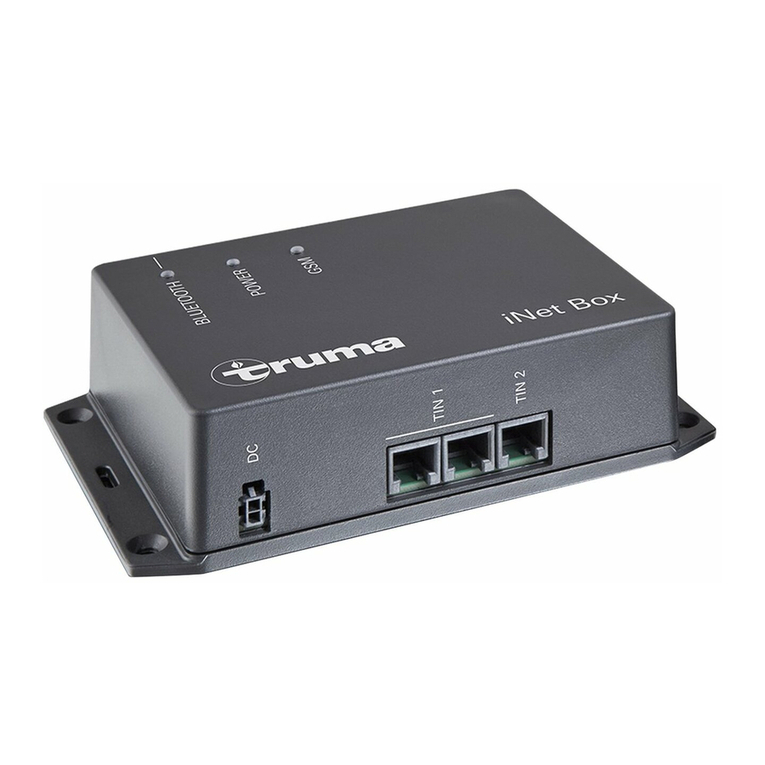EFI EB-32 Installation and maintenance instructions

Printer Controller EB-32
Installation and Service Guide
A guide for service technicians
Replacement parts and specifications are
subject to change. For a current parts list,
contact your authorized service/support center.
45121967
16 December 2013

© 2013 Electronics For Imaging
This documentation is protected by copyright, and all rights are reserved. No part of it may be reproduced or transmitted in
any form or by any means for any purpose without express prior written consent from Electronics For Imaging (“EFI”), except
as expressly permitted herein. Information in this documentation is subject to change without notice and does not represent a
commitment on the part of EFI. The documentation is further covered by “Legal Notices” distributed with this product. The
documentation may be provided in conjunction with EFI Software (“Software”) and any other EFI product described in the
documentation. The Software is furnished under license and may only be used or copied in accordance with the terms of the
EFI Software End User License Agreement, which can be found in the “Legal Notices” distributed with this product.

CONTENTS 3
CONTENTS
INTRODUCTION 9
Document conventions 9
About the EB-32 9
How the EB-32 operates 9
Before you service the EB-32 10
Tools you will need 10
Precautions 11
Creating an electrostatic discharge (ESD) safe environment 12
INSTALLING HARDWARE 14
About the installation process 14
Checking the customer site 16
Setting customer expectations 17
Unpacking the EB-32 18
Connecting the EB-32 19
Configuring a static IP address for the EB-32 21
Completing installation and starting up 22
CONTENTS

CONTENTS 4
USING THE EB-32 23
EB-32 control panel 23
Activity light 23
Buttons 24
Functions menu 24
Using the copier touch panel 25
Main tab 25
PrintMe tab 25
Job List tab 25
Tools tab 26
Scan tab 26
Fiery tab 26
Printing EB-32 pages 28
Network Status LEDs 29
FieryBar 30
Messages 30
Activity light 30
Commands 31
About Configure 32
Starting, shutting down, restarting, and rebooting 33
REPLACING PARTS 37
Overview 37
EB-32 diagrams 38
Accessing internal components 44
Shutting down the system 44
Opening the EB-32 44

CONTENTS 5
Removing and replacing EB-32 components 48
Copier interface board 49
User Interface Board 50
Motherboard 52
Verifying new motherboard installation and transferring options 61
Replacing parts on the motherboard 63
DIMM(s) 64
CPU and CPU cooling assembly 65
Chassis fan 69
Power supply 70
Hard disk drive 73
DVD drive 77
Restoring and verifying functionality after service 79
INSTALLING SYSTEM SOFTWARE 80
Before you install system software 80
Changing the factory default language 82
Backing up the system configuration 82
Restoring the system configuration 83
Fiery System Restore 84
Installing system software 86
Updating EB-32 system and user software 89
Before updating the EB-32 89
System updates 90
Check for Product Updates (Software Downloads Site) 92
Remote Desktop 94

CONTENTS 6
TROUBLESHOOTING 95
Troubleshooting process 95
Preliminary on-site checkout 95
Checking external connections 96
Checking internal components 97
Inspecting the system 98
Normal startup sequence 103
Error messages and conditions 104
SPECIFICATIONS 115
Hardware features 115
Physical specifications 115
Networking and connectivity 116
User software 116
Safety and emissions compliance 116
INDEX 117

LIST OF FIGURES 7
LIST OF FIGURES
FIGURE 1: Space requirements 16
FIGURE 2: Affixing the decal to the copier 18
FIGURE 3: Straight-through and crossover Ethernet cables 20
FIGURE 4: EB-32 control panel 23
FIGURE 5: FieryBar 30
FIGURE 6: EB-32 front panel 38
FIGURE 7: EB-32 connector panel 39
FIGURE 8: Internal side view of the EB-32 40
FIGURE 9: Exploded view of EB-32 components 41
FIGURE 10: Data cable connections inside the EB-32 42
FIGURE 11: Power cable connections inside the EB-32 43
FIGURE 12: Removing/replacing the side panel 45
FIGURE 13: Removing/replacing the top panel 46
FIGURE 14: Removing/replacing the front panel 47
FIGURE 15: Copier interface board 49
FIGURE 16: Diagram of the User Interface Board (front and back) 50
FIGURE 17: Removing/replacing the User Interface Board 51
FIGURE 18: Motherboard battery 53
FIGURE 19: Cable connections for power button 54
FIGURE 20: Diagram of the EB-32 motherboard 55
LIST OF FIGURES

LIST OF FIGURES 8
FIGURE 21: Removing the motherboard from the chassis 57
FIGURE 22: Removing or replacing a DIMM 64
FIGURE 23: CPU cooling assembly 65
FIGURE 24: Removing the CPU cooling assembly 66
FIGURE 25: Removing/replacing the CPU 67
FIGURE 26: Locating the flat corner of the CPU socket 68
FIGURE 27: Removing/replacing the chassis fan 69
FIGURE 28: Removing/replacing the power supply 71
FIGURE 29: Removing/replacing the hard disk drive bracket 74
FIGURE 30: Removing/replacing the hard disk drive from the hard disk drive bracket 75
FIGURE 31: Removing/replacing the DVD drive bracket 77
FIGURE 32: Removing/replacing the DVD drive 78
FIGURE 33: Software Download Site example (page varies by product) 93

INTRODUCTION 9
INTRODUCTION
This document includes information about servicing the Printer Controller EB-32, which is
referred to in this document as the “EB-32.”
Document conventions
NOTE:The NOTE format highlights important messages and additional information.
The WARNING icon indicates a warning concerning operations which, if not performed
correctly, may lead to death or injury. To use the EB-32 safely, always pay attention to
WARNING icons and messages.
The CAUTION icon indicates a caution concerning operations which, if not performed
correctly, may lead to injury. To use the EB-32 safely, always pay attention to CAUTION
icons and messages.
The IMPORTANT icon indicates operational requirements and restrictions. To operate the
EB-32 correctly and avoid damage to the EB-32 or other property, always pay attention to
IMPORTANT icons and messages.
About the EB-32
The EB-32 adds computer connectivity and highly efficient PostScript and PCL printing
ability to the Pro 8120S/8110S/8100S.
With the EB-32, customers can use the copier as a PostScript printer and scanner. Once it is
connected to the copier through the network, customers can print to the EB-32 from
supported client computers on the network.
The EB-32 ships with software preinstalled so that customers can use it immediately.
However, as part of servicing the EB-32, you may need to reinstall software.
How the EB-32 operates
When a customer prints, the motherboard and copier interface board process image data.The
copier interface board is a custom board and allows the EB-32 to communicate with the
copier. The CPU controls the transfer of image data to and from the motherboard and runs
the PostScript interpreter. DIMMs hold image data during printing.
The interpreter rasterizes the page description file and compresses the image pattern into
memory using compression technology. The interpreter outputs the compressed raster data
through the image frame buffer memory to the copier interface board. The raster data is sent
to the copier, which then renders the image on paper at maximum speed.

INTRODUCTION 10
Before you service the EB-32
Before you service the EB-32, it is strongly recommended that you make sure that you have
the required tools (page 10) and carefully review all precautions.
Also, keep in mind that the most common cause of a hardware problem is a faulty or loose
connection. Before you replace an expensive component, check internal and external
connections.
Tools you will need
To install or service the EB-32, you will need the following tools and parts:
• ESD wrist grounding strap and antistatic mat
• Flathead screwdriver
• #0, #1, and #2 Phillips head screwdrivers
• Needlenose pliers
• EB-32 documentation, including the customer media pack and any related
service bulletins
Avoid touching magnetic tools to storage media such as hard disk drives. Contact between
magnetic tools and magnetic storage media may result in data corruption.

INTRODUCTION 11
Precautions
Always observe the following general precautions when installing or servicing the EB-32:
• The EB-32 contains hazardous moving parts. When servicing the EB-32, keep away from
moving fan blades.
• Avoid pressing the surface of the LCD.
Applying excessive pressure to the LCD window causes it to change color.
• Use a soft cloth moistened with Lens and Mirror Cleaner to clean the surface of the EB-32
display window.
Other solvents, such as water, may damage the polarizer on the display window.
• When connecting or disconnecting the power cable:
–Only use the power cable that shipped with the EB-32 or an appropriate replacement
power cable available from an authorized provider.
–Always disconnect the power cable from the EB-32 connector panel before opening the
unit and servicing internal components.
–Do not pull on the power cable when unplugging the EB-32. Instead, pull the plug.
–Do not place objects on the power cable. Place the power cable away from foot traffic.
–Do not tamper with or disable the power cable grounding plug.
–Do not use a 3-prong adapter in a 2-hole, ungrounded outlet.
–Do not use an extension cord.
–Do not plug the EB-32 into a circuit with heating or refrigeration equipment (including
water dispensers).
–Do not plug the EB-32 into a switchable power outlet. This can result in the EB-32
being turned off accidentally.
• Never set any liquid on or near the EB-32 or the copier. If liquid is spilled into the EB-32 or
the copier, disconnect the power cable immediately.
• Do not attempt to open the power supply, DVD drive, or hard disk drive.
• Handle the EB-32 LCD window with care.
If the EB-32 LCD window breaks and the liquid crystal inside leaks out, avoid contact. If you
come in contact with the liquid crystal, immediately wash it off your skin with soap and
water.
• Use care when handling parts of the EB-32, as some edges on the unit may be sharp.
• Do not install third-party applications onto the EB-32. Third-party applications are not
supported and can cause system problems. Although virus scans are permitted on the EB-32,
antivirus software should not be loaded in memory-resident mode.

INTRODUCTION 12
• Do not change the Windows operating system software preference settings.
Depending on the changes made, the EB-32 may become unstable or even unusable. If this
occurs, we recommend that you reinstall the EB-32 System Software, which reliably restores
the Windows operating system software to its factory defaults.
• Never alter an existing network without permission.
The EB-32 will probably be connected to an existing Local Area Network (LAN) based on
Ethernet hardware. The network is the link between the customer’s computer, existing laser
printers, and other prepress equipment. Never disturb the LAN by breaking or making a
network connection, altering termination, installing or removing networking hardware or
software, or shutting down networked devices without the knowledge and explicit permission
of the system or network administrator or shop supervisor.
• Unless you are the network administrator, never assign an IP address in EB-32 Network Setup.
In a DHCP environment, the system assigns the IP address automatically. In a non-DHCP
environment, enter only the IP address that has been assigned by the network administrator.
Only the network administrator should assign an IP address to a network device. Assigning
the EB-32 an incorrect IP address may cause unpredictable errors on any or all devices
connected to the network.
• When recycling or disposing of any product or packaging, please comply with local guidelines
or regulations.
• Do not use flammable sprays or solvents in the vicinity of this machine. Also, avoid placing
these items in the vicinity of this machine. Doing so could result in fire or electric shock.
Creating an electrostatic discharge (ESD) safe environment
• Follow standard ESD precautions while working on the internal components of the EB-32.
Static is always a concern when servicing electronic devices. It is highly unlikely that the area
around the copier and the EB-32 is static-free. Carpeting, leather-soled shoes, synthetic
clothing fibers, silks, and plastics may generate a static charge of more than 10,000 volts.
Static discharge is capable of destroying the circuits etched in silicon microchips, or
dramatically shortening their life span. By observing standard precautions, you may avoid
extra service calls and save the cost of a new board.
When possible, work on a ground-connected antistatic mat. Wear an antistatic grounding
strap, grounded at the same place as the antistatic mat. If that is not possible, do the
following:
• Attach a grounding strap to your wrist. Attach the other end to a good ground.
• When you unpack the EB-32 from the carton for the first time, touch a metal area of the
copier to discharge the static on your body.
• Before you remove any of the EB-32 panels and handle internal components, touch a
metal part of the EB-32.

INTRODUCTION 13
• Leave new electronic components inside their antistatic bags until you are ready to install
them. When you remove components from an antistatic bag, place them on a grounded
antistatic surface, component-side up.
• When you remove an electronic component, place it in an antistatic bag immediately.
Do not walk across a carpet or vinyl floor while carrying an unprotected board.
• During service to the motherboard, avoid using excessive force and always place the
motherboard on a grounded, non-metallic, antistatic surface. Never allow any metal to
touch the solder contacts on the underside of the motherboard, especially beneath the
battery socket. Improper handling can short circuit and permanently damage the
motherboard.
• Handle printed circuit boards by their opposing edges only and avoid touching the contacts
on the edge of the board.
Power Supply Cord Notice
CAUTION: The power supply cord is used as the main disconnect device. Ensure that the socket-outlet is located/installed near the
equipment and is easily accessible.
Lithium Battery Notice
CAUTION There is a danger of explosion if the battery is replaced with an incorrect type. Replace a battery only with the same type
recommended by the manufacturer. Dispose of used batteries according to local regulations.
Short Circuit Protection
WARNING: This product relies on the building’s installation for short-circuit (overcurrent) protection. Ensure that a fuse or circuit
breaker no larger than 120 VAC, 15A U.S. (240 VAC, 10A international) is used on the phase conductors
(all current-carrying conductors).

INSTALLING HARDWARE 14
INSTALLING HARDWARE
This chapter includes the following topics:
• “Checking the customer site”
• “Unpacking the EB-32”
• “Connecting the EB-32”
• “Completing installation and starting up”
About the installation process
It is strongly recommended that you review this chapter before you install the EB-32. Also
keep in mind that installation problems are easier to avoid and diagnose if you proceed from
the component level to the system level, verifying functionality at each step.
Since the EB-32 is connected to the customer’s network, be sure to coordinate your
installation schedule with the network administrator at the customer site. For information
about network setup, refer the network administrator to Configuration and Setup, which is
part of the user documentation set.
NOTE:You can change the default language that is preinstalled at the factory, if needed (see
“Changing the factory default language” on page 82).
TOINSTALL THE EB-32
1 Check installation requirements and verify site conditions.
If possible, obtain verification that the network is operational (see page 16).
2 Unpack the EB-32 (see page 18).
3 If applicable, connect the monitor, keyboard, mouse, and furniture to the EB-32.
For more information on setting up the furniture, see the documentation that comes with the
furniture kit.

INSTALLING HARDWARE 15
4 Do the following to prepare the copier for use with the EB-32:
• Install the Gigabit Ethernet board in the copier.
• Install the Fiery key top on the copier.
• Enter SP mode on the copier and specify the correct SP setting to enable communication
between the copier and the EB-32.
The following SP settings are needed for the EB-32:
–SP5193-001:[1]
–SP5895-001:[1]
–SP5895-002:[0]
–SP5985-001:[1]
–SP4-201-011[1]
–SP4-201-012[1]
• Apply the Fiery decal the copier.
NOTE:For more information about installing the Gigabit Ethernet board and the Fiery key on
the copier, and changing the SP mode of the copier, see the Service Manual for the copier.
This information is not found in the documentation for the EB-32.
5 Connect the following cables:
• Power cable (see page 19)
• Copier interface cable (crossover Ethernet cable) from the lower Ethernet port (see page 19)
• Network cable (straight-through Ethernet cable) from the upper Ethernet port (see page 20)
6 Complete the installation (see page 22).
Remind site administrator to install current user software on client computers that print to
the EB-32 (see Printing and Utilities, which are part of the user documentation set).

INSTALLING HARDWARE 16
Checking the customer site
Before you install the EB-32, check site conditions and inform the customer of any
installation requirements.
TOCHECK THE CUSTOMER SITE
• Is the copier configured for use with the EB-32?
For correct settings, see the documentation that accompanies the copier.
• Is there adequate space for the EB-32 near the copier?
Make sure there is enough space at the back and on both sides so that cables do not interfere
with use or service of the copier (for example, clearing a paper jam).
FIGURE 1: Space requirements
• Is a dedicated, grounded electrical outlet for the EB-32 available near the copier?
Do not run the EB-32 and the copier on the same circuit. If the customer has provided one,
use a surge suppressor for the EB-32.
• Will the network be available at the time of installation? (See the network administrator.)
• Is the network functioning? (See the network administrator.)
Connector panel
Side panel
20cm+ (8 in.)
EB-32
20cm+ (8 in.)

INSTALLING HARDWARE 17
Setting customer expectations
When the site is ready, installation of the EB-32 takes about 1 hour. Inform the customer of
the following:
• Some nodes on the network may be unavailable during service.
• The network administrator must be available during the installation for
network connectivity.
Equipment downtime and impact on the network can be minimized if the network
administrator installs a network connector for the EB-32 and confirms network
functionality with the connector in place before the date scheduled for the EB-32
installation.
• The network administrator must have a networked computer available during the
installation. The appropriate software must be installed in advance. Documentation for
the networked computer and the network operating software should be available.
• The network administrator must install the user software shipped with the EB-32 onto
networked Windows and Mac OS computers that will print to the EB-32 (user
documentation is also included).

INSTALLING HARDWARE 18
Unpacking the EB-32
Before you unpack the EB-32, it is strongly recommended that you review all “Precautions”
on page 11 to avoid injury or damage to the EB-32.
The EB-32 is assembled and shipped from the factory with all necessary cables (except for the
network cable) and documentation. For shipping contents, see the Packing List.
TOUNPACK THE EB-32
It is strongly recommended that you save all packing materials in case you need them later (for
example, if you discover something is damaged and need to return it). Do not immediately
discard packing materials.
1 Open the box and remove the packing material.
Save the original boxes and packing material in case you need to transport the EB-32 at a later
date.
2 Remove the contents from the top accessory tray. Inspect the contents for visible damage.
3 Give the media pack to the customer or network administrator.
Let the customer or network administrator know that in order to take full advantage of the
EB-32, the user software must be installed on computers that will print to the EB-32.
4 Remove the top accessory tray and any packing material.
Set aside the packing material and note the orientation of the EB-32 inside the shipping
container, in case you need to repack it later.
5 Carefully lift the EB-32 out of the box.
If you notice shipping damage to any component, save the shipping container in case the
carrier needs to see it. Call the carrier immediately to report the damage and file a claim.
6 Locate the EFI/Fiery decal in the shipping container and affix it to the copier as shown.
FIGURE 2: Affixing the decal to the copier
EFI/Fiery decal

INSTALLING HARDWARE 19
Connecting the EB-32
After you unpack the EB-32, do the following:
•Connecttopower
• Connect to the copier
• Connect to the network
TOCONNECT TO POWER
1 Connect one end of the EB-32 power cable to the power connector on the back of the EB-32
(see Figure 7 on page 39).
2 Connect the other end of the EB-32 power cable to a power outlet.
TOCONNECT TO THE COPIER
NOTE:For more information about installing the Gigabit Ethernet board and the Fiery key on
the copier, and changing the SP mode of the copier, see the Service Manual for the copier.
This information is not found in the documentation for the EB-32.
1. Make sure that the Gigabit Ethernet board is installed in the copier.
2. Enter SP mode on the copier and specify the correct SP setting to enable communication
between the copier and the EB-32.
The following SP settings are needed for the EB-32:
• SP5193-001:[1]
• SP5895-001:[1]
• SP5895-002:[0]
• SP5985-001:[1]
• SP4-201-011[1]
• SP4-201-012[1]
3 Make sure that the EB-32 and the copier are powered off.
4 Connect the copier interface cable (crossover Ethernet cable) from the lower Ethernet port on
the EB-32 connector panel to the copier (see Figure 7 on page 39).
NOTE:The copier interface cable included with the EB-32 is a crossover Ethernet cable that
connects to the lower (crossover) Ethernet port on the EB-32 connector panel. The network
cable at the customer site is a straight-through Ethernet cable that connects to the upper
(straight-through) Ethernet port on the EB-32 connector panel. The cables look similar, but
are not interchangeable. Make sure that you connect the cables to the correct ports (see
Figure 7 on page 39).

INSTALLING HARDWARE 20
To verify the cable type, align the connectors on each end of the cable as shown in Figure 3.
On a straight-through cable, the wire arrangements are identical on both ends; on a crossover
cable, the wire arrangements are different.
FIGURE 3: Straight-through and crossover Ethernet cables
TOCONNECT TO THE NETWORK
1 Make sure that the EB-32 is powered off.
2 Make sure that the network cable is connected to the customer site network.
3 Connect the network cable (straight-through Ethernet cable) to the upper Ethernet port on
the back of the EB-32 (see Figure 7 on page 39).
The EB-32 provides twisted pair connectivity to an Ethernet network. When the network
cable is connected, the Ethernet interface automatically detects the speed of the network
environment. Depending on your network speed, the following unshielded twisted pair
(UTP) network cables are supported:
• 10BaseT: Category 3 or higher
• 100BaseTX: Category 5 or higher (4-pair/8-wire, short-length)
• 1000BaseT: Category 5e or higher (4-pair/8-wire, short-length)
NOTE:Make sure that the network cable is a straight-through Ethernet cable. For more
information, see Figure 3 on page 20.
After power on, the site administrator should perform network setup, verify the network
connection, verify that the EB-32 appears in the list of printers, and then print a few test
documents from a networked computer that will use the EB-32. For more information, see
Configuration and Setup.
1234 1234
1234 3412
=
=
Align cable connectors side
by side and examine wires: Straight-through cable:
wire arrangements are
identical on both connectors
Crossover cable:
wire arrangements are different
(The wire arrangement shown
here is an example; actual
arrangements may vary.)
Table of contents
Other EFI Control Unit manuals
Popular Control Unit manuals by other brands

RAK
RAK WisBlock RAK19010 quick start guide
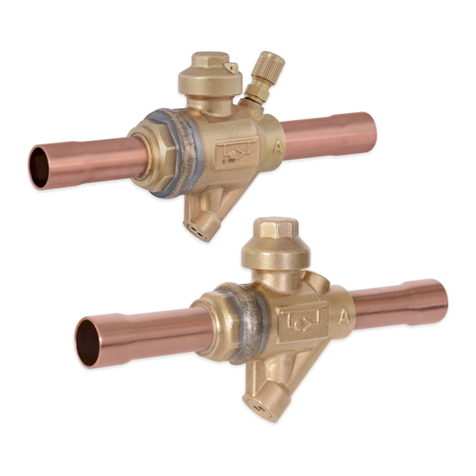
Parker
Parker EBV-PR Series Installation and servicing instructions

Kovert
Kovert 22x PTZ instruction manual
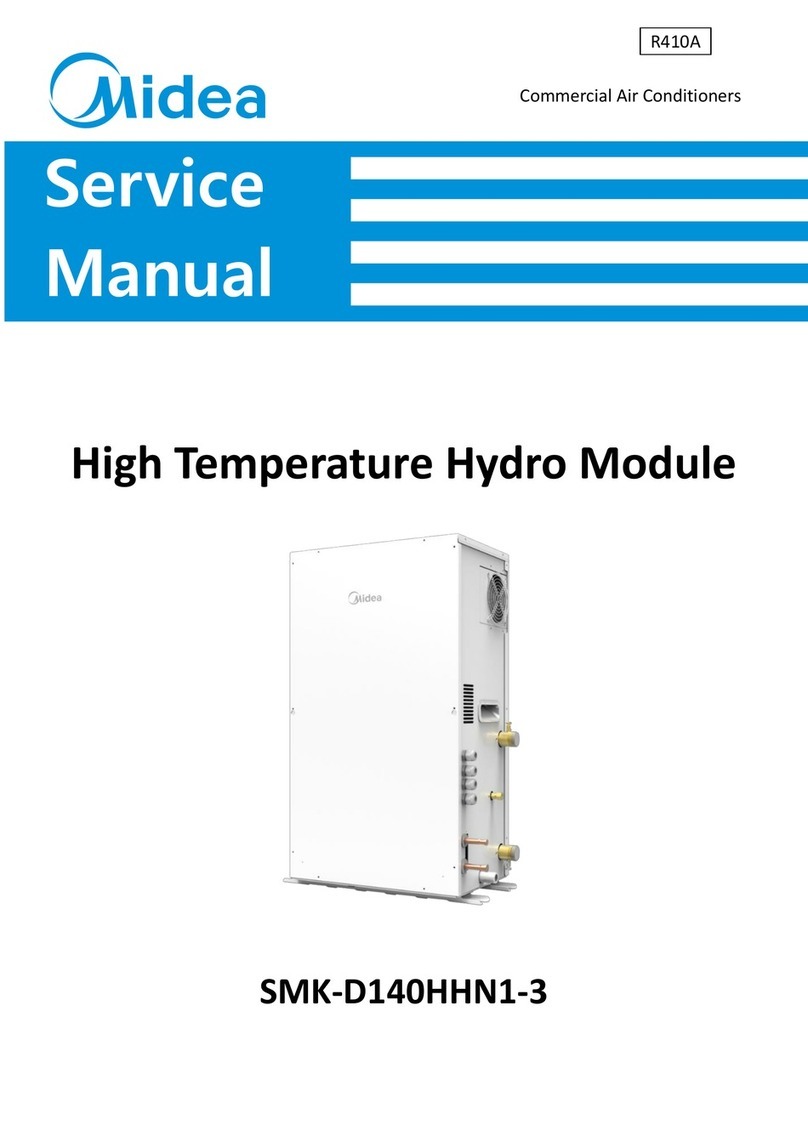
Midea
Midea SMK-D140HHN1-3 Service manual
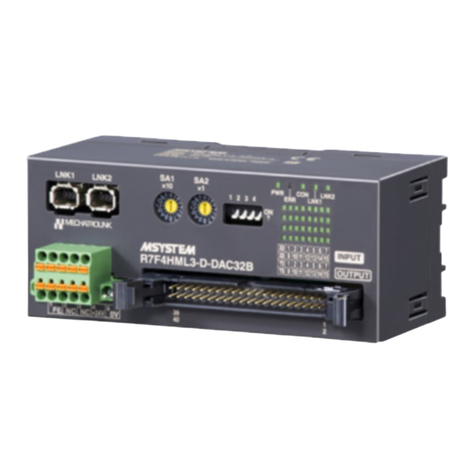
M-system
M-system R7F4HML3-D-DAC32A instruction manual
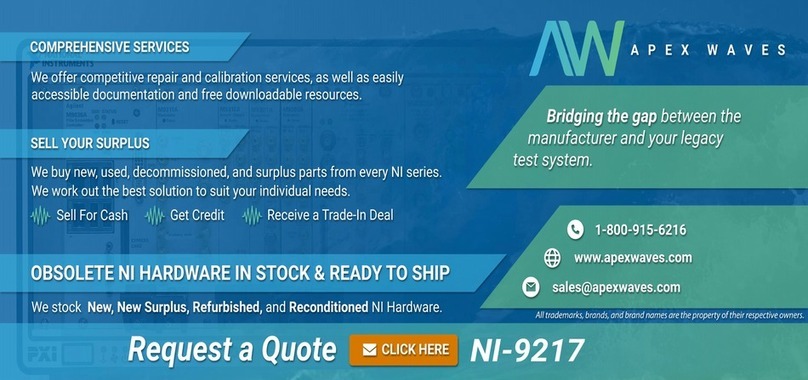
National Instruments
National Instruments NI 9217 Getting started guide
